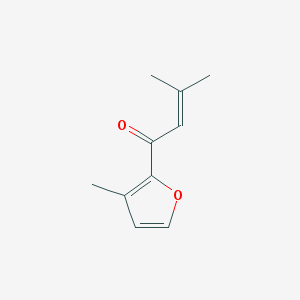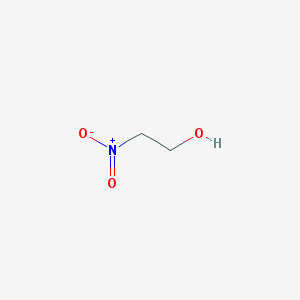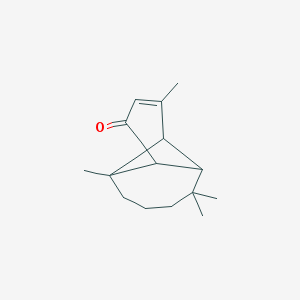About Chemical and Physical Properties Table Headings
The Chemical and Physical Properties specifications used for describing a molecule have been tabulated with specific terms and their respective descriptions in detail. The following table outlines, what the each specification includes. The left column having headings and the right column showing the information related to the parameters.
Physical and Chemical properties
| PUBCHEM ID | The PubChem molecule Unique ID. |
| Molecular Weight (mg/mol) | The chemical molecular weight |
| Molecular Formula | The empirical formula |
| Hydrogen Bond Donor Count | Number of H-Bond donor |
| Hydrogen Bond Acceptor Count | Number of H-Bond acceptor |
| Rotatable Bond Count | Number of rotatable bond present in compound |
| IUPAC Name | International Union of Pure and Applied Chemistry name of compound |
| Fragrance | Description of the fragrance and odour of compound |
| Compound Smile | CC1=CCC(C1(C)C)CC=O |
| PUBCHEM IUPAC INCHIKEY | PubChem International Chemical Identifier of compound |
| ADMET Solubility Level | Key to aqueous solubility levels (ADMET_Solubility_Level) 1= very low; 2= low; 3= good |
| Vapour Pressure (log10(mmhg)) | The high vapour pressure results from a low boiling point, which causes large numbers of molecules to evaporate or sublimate from the liquid or solid form of the compound and enter the surrounding air, a trait known as volatility. |
Absorption and Metabolism information
| PUBCHEM XLOGP3 AA | PubChem Water-octanol partition coefficient of compound |
| PUBCHEM CACTVS TPSA | PubChem topological polar surface area |
| ADMET BBB Level | Blood Brain Barrier: 0= very high; 1= high; 2= medium; 3= low |
| ADMET Absorption Level | Predicts Human Intestinal Absorption (HIA) after oral administration and reports a classification of absorption level: 0=Good; 1=Moderate; 2=Low; 3 =Very low |
| ADMET EXT PPB#Prediction | Predicts whether or not a compound is likely to be highly bound to carrier proteins in the blood. 0=False; 1=True; |
| ADMET AlogP98 | Predicts human intestinal absorption (HIA) after oral administration.
0=ADMET_Absorption_T2_2D < 6.1261 (inside 95%) Good absorption; 1=6.1261 ≤ ADMET_Absorption_T2_2D < 9.6026 (inside 99%) Moderate absorption; 2=9.6026 < ADMET_Absorption_T2_2D (outside 99%)
Low absorption; 3=ADMET_PSA_2D ≥ 150.0 or ADMET_AlogP98 ≤ -2.0 or ADMET_AlogP98 ≥ 7.0 Very low absorption.
|
| ADMET EXT CYP2D6#Prediction | The cytochrome P450 2D6 inhibition |
Toxicological Information
| TOPKAT Mouse Female FDA | US FDA rodent carcinogenicity of female mouse (Carcinogen vs. Non-carcinogen). |
| TOPKAT Mouse Male FDA | US FDA rodent carcinogenicity of male mouse (Carcinogen vs. Non-carcinogen). |
| TOPKAT Rat Female FDA | US FDA rodent carcinogenicity of female rat- (Carcinogen vs. Non-carcinogen). |
| TOPKAT Rat Male FDA | US FDA rodent carcinogenicity of male rat (Carcinogen vs. Non-carcinogen). |
| TOPKAT Ames Prediction | Prediction of Ames mutagenicity (Non-Mutagen vs. Mutagen) |
| TOPKAT DTP Prediction | Developmental Toxicity Potential. (Toxic vs Non-Toxic) |
| TOPKAT Rat Oral LD50 | Median lethal dose measure of a toxin, radiation, or pathogen in Rat. |
| TOPKAT Skin Irritancy | Measure of Skin irritancy (Mild, Moderate, Severe, None) |
| TOPKAT Ocular Irritancy | Measure of Ocular irritancy (Mild, Moderate, Severe, None) |
| ADMET EXT Hepatotoxic#Prediction | Predicts the occurrence of dose-dependent human hepatoxicity. |
| Effected Human Genes | Human Genes which are affected by compound activity |
Ecological Information
| TOPKAT Aerobic Biodegradability Prediction | Aerobic Biodegradability in measure of (Degeradable and Non-Degeradatble) |
Hazard(s) Identification
| Physical hazards | It is to determine if a chemical is hazardous pursuant to the Hazard Communication standard HCS. |
| Health hazards | It is to determine if a chemical is hazardous (i.e., having carcinogenicity or sensitization property). |
| Environmental hazards | It is to determine whether the chemical is good or bad for environment. |
Reference:
1. ADMET proterties were calculated by TOPKAT module of Discovery Studio v3.5 software (Accelrys, USA).
2. Bolton E, Wang Y, Thiessen PA, Bryant SH. PubChem: Integrated Platform of Small Molecules and Biological Activities. Chapter 12 IN Wheeler RA and Spellmeyer DC, eds. Annual Reports in Computational Chemistry, Volume 4. Oxford, UK: Elsevier, 2008, pp. 217-241. doi:10.1016/S1574-1400(08)00012-1.











